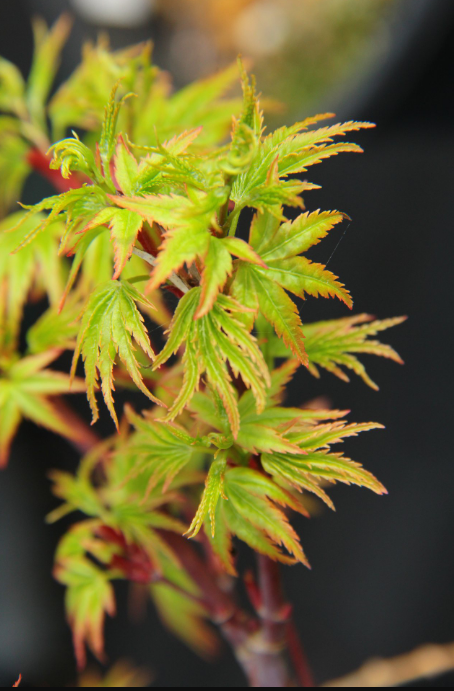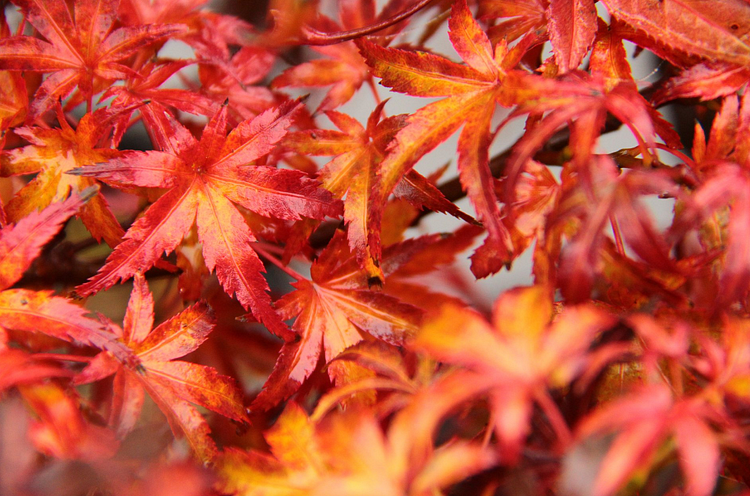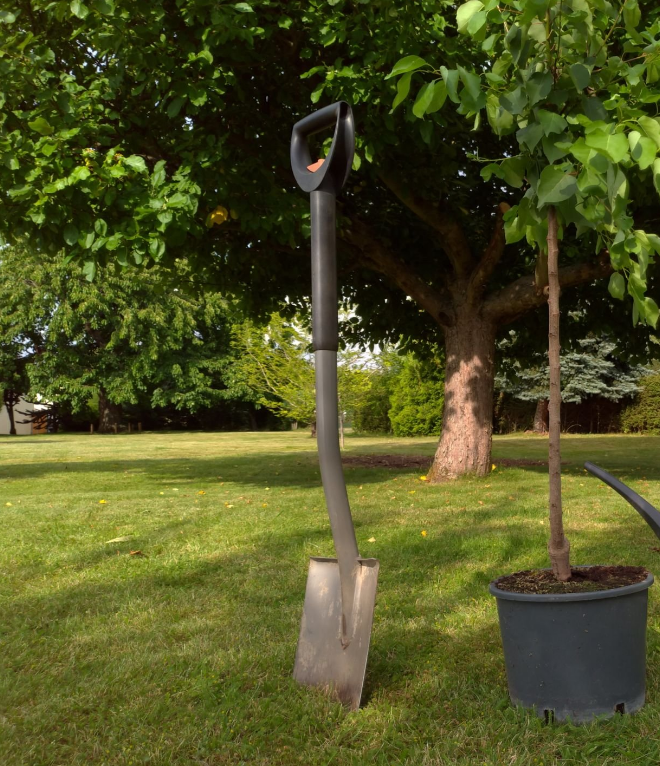Sharp’s Pygmy Japanese Maple: A Petite Delight for Your Garden
Japanese maples (Acer palmatum) have long been revered for their elegant beauty and transformative impact on gardens. Among the many captivating varieties, the Sharp’s Pygmy Japanese Maple (Acer palmatum ‘Sharp’s Pygmy’) stands out as a petite, yet remarkable addition.
In this blog, we’ll explore the captivating features, care guidelines, and the enduring allure that this compact Japanese maple brings to your outdoor space.

The Charm of Sharp’s Pygmy Japanese Maple
The Sharp’s Pygmy Japanese Maple, also known as Acer palmatum ‘Sharp’s Pygmy,’ is a diminutive deciduous tree, adored for its compact size and intricate, finely dissected leaves.
This variety is ideal for smaller gardens, courtyards, patios, or even container plantings, where it can create a striking focal point without overwhelming the space.
Foliage and Color
One of the standout features of the Sharp’s Pygmy Japanese Maple is its exquisite foliage. The leaves are deeply dissected, creating a delicate and lace-like appearance.
In spring, the leaves emerge in vibrant shades of green, providing a refreshing and vibrant start to the growing season. As the seasons progress, the foliage takes on stunning shades of red and orange, culminating in a breathtaking display in the fall.
This transformation adds layers of visual interest to your garden.

Caring for Sharp’s Pygmy Japanese Maple
Proper care is essential to ensure your Sharp’s Pygmy Japanese Maple thrives and continues to bring beauty to your garden. Here are some crucial care tips:
1. Sunlight: Plant your Sharp’s Pygmy Japanese Maple in a location with partial shade to dappled sunlight. While it can tolerate morning sun, it’s crucial to shield it from intense afternoon sunlight, which can scorch its delicate leaves.
2. Soil: Well-drained, slightly acidic soil is ideal for this maple. Amending the soil with organic matter can enhance growth and overall health.
3. Water: These trees require consistent moisture to thrive. Regular watering is essential, especially during dry spells or hot weather.
4. Pruning: Prune your Sharp’s Pygmy Japanese Maple minimally, primarily to remove dead or crossing branches. Pruning is best done during late winter or early spring, before new growth begins.
5. Fertilization: Use a balanced, slow-release fertilizer in early spring to provide the necessary nutrients. Avoid over-fertilization, which can harm the tree.

Year-Round Beauty for Cozy Gardens
One of the most remarkable attributes of Sharp’s Pygmy Japanese Maple is its year-round beauty. In spring, it displays fresh, vibrant foliage that creates a focal point.
As summer arrives, the leaves maintain their charm, providing shade and a sense of tranquility. The real magic happens in the fall when the leaves transform into a breathtaking display of reds and oranges.
Even during the winter months, the delicate branches and architectural form continue to add visual interest to your garden.
Conclusion
Sharp’s Pygmy Japanese Maple is a petite yet enchanting addition to any garden, regardless of its size. With its stunning foliage and captivating seasonal changes, it infuses your outdoor space with enduring beauty.
The year-round interest it brings, from spring’s fresh greens to fall’s fiery display, makes it a must-have for garden enthusiasts with a penchant for elegance.
Cultivate the magic of Sharp’s Pygmy Japanese Maple and experience its timeless allure in your cozy garden retreat.
Whether you’re a seasoned gardener or a novice, this petite delight promises to enhance your garden with its unique charm and enduring beauty.
